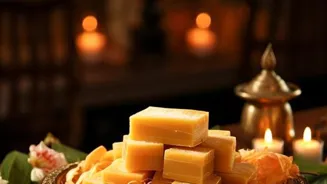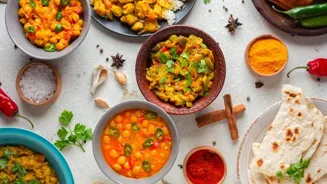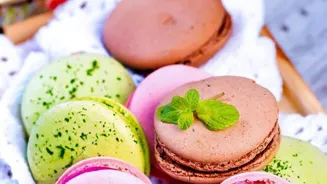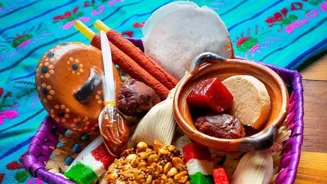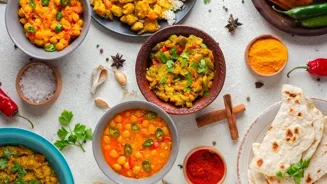Discover the significance of Indian desserts in celebrations, from fostering social bonds to preserving cultural values. Read more
India, a land of vibrant colours, diverse cultures, and rich traditions,
celebrates life with unmatched enthusiasm. And what's a celebration without something sweet? Desserts in India aren't just the end of a meal; they are integral to festivals, weddings, and other auspicious occasions.
They represent good fortune, happiness, and the sweetness of life itself. From the creamy indulgence of Rasmalai to the comforting warmth of Gajar ka Halwa, Indian sweets are a delightful journey for the taste buds and a significant part of our cultural heritage.
Every region boasts its unique specialties, reflecting the local ingredients and culinary expertise passed down through generations. These sweet treats are not merely food; they are symbols of love, togetherness, and celebration deeply embedded in the Indian psyche.
Indian desserts strengthen bonds, foster community in celebrations
The significance of desserts in Indian celebrations extends beyond mere indulgence. They play a crucial role in strengthening social bonds and fostering a sense of community.
During festivals like Diwali and Holi, homes are filled with the aroma of freshly made sweets, often prepared collectively by family members. This shared activity brings people together, creating lasting memories and reinforcing familial connections.
Sharing sweets with neighbours and friends is a cherished custom, signifying goodwill and promoting harmony. The act of gifting sweets is seen as a gesture of appreciation and respect, especially during weddings and other important life events.
Therefore, Indian desserts are more than just culinary delights; they are powerful tools for building relationships and preserving cultural values.
Diwali and weddings celebrate joy with sweet sharing traditions
Consider Diwali, the festival of lights, where the tradition of sharing sweets is paramount. Laddoos, barfis, and jalebis are prepared in abundance and distributed amongst family, friends, and neighbours.
This act of sharing symbolizes the spreading of joy and light, dispelling darkness and negativity. Similarly, during weddings, a plethora of sweets is offered to guests as a sign of hospitality and blessings for the newly married couple.
Each sweet represents a different aspect of a happy and prosperous married life. The elaborate sweet displays at weddings are a testament to the importance of desserts in these celebrations, showcasing not only culinary skills but also the family's generosity and commitment to tradition.
Diverse Indian desserts reflect regional flavors and traditions
The diversity of Indian desserts is a reflection of the country's vast regional variations. In the North, you find rich and decadent sweets like Gajar ka Halwa (carrot pudding) and Gulab Jamun (deep-fried milk balls in syrup), often made with generous amounts of ghee and nuts.
The East is renowned for its milk-based sweets like Rasgulla (cheese balls in syrup) and Sandesh (sweet cheese dessert), known for their delicate textures and subtle flavours.
The South offers unique treats like Payasam (rice pudding) and Mysore Pak (gram flour fudge), characterized by the use of coconut milk and jaggery.
The West boasts sweets like Shrikhand (hung curd dessert) and Modak (steamed rice flour dumplings), often enjoyed during festivals like Ganesh Chaturthi. This regional diversity ensures that there is a sweet for every palate and every occasion.
Indian dessert-making: love, tradition, effort in recipes like Gulab Jamun, Rasmalai
The preparation of Indian desserts is often a labour of love, requiring patience, skill, and adherence to traditional recipes. Many sweets are made from scratch, using fresh ingredients and time-honoured techniques.
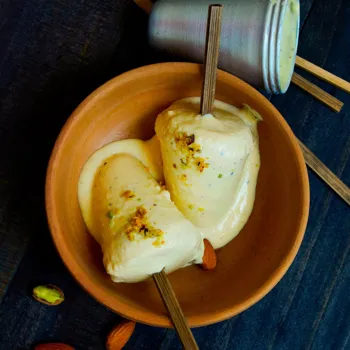
For instance, making Gulab Jamun involves carefully kneading khoya (reduced milk solids), shaping it into small balls, and then deep-frying them to golden perfection before soaking them in a fragrant sugar syrup.
Similarly, making Rasmalai requires separate processes for creating the cheese patties and the creamy milk base. The dedication and effort that goes into making these sweets adds to their value and makes them even more special.
These recipes are often passed down through generations, preserving the culinary heritage of the family and the region.
Indian desserts evolve, blending tradition with innovation for modern tastes
Beyond their traditional relevance, Indian desserts are also evolving to cater to modern tastes and preferences.
While classic sweets remain popular, innovative chefs and home cooks are experimenting with new ingredients and techniques, creating fusion desserts that blend traditional flavours with contemporary presentation. For example, one might find a Gulab Jamun cheesecake or a Rasmalai mousse.
These creations appeal to a younger generation while still retaining the essence of Indian sweets. This continuous evolution ensures that Indian desserts remain relevant and continue to be a cherished part of Indian celebrations for years to come.
The sweet journey through India's culinary landscape is an ongoing and evolving one, filled with delicious surprises and timeless traditions.
AI Generated Content. Glance/InMobi shall have no liability for the content